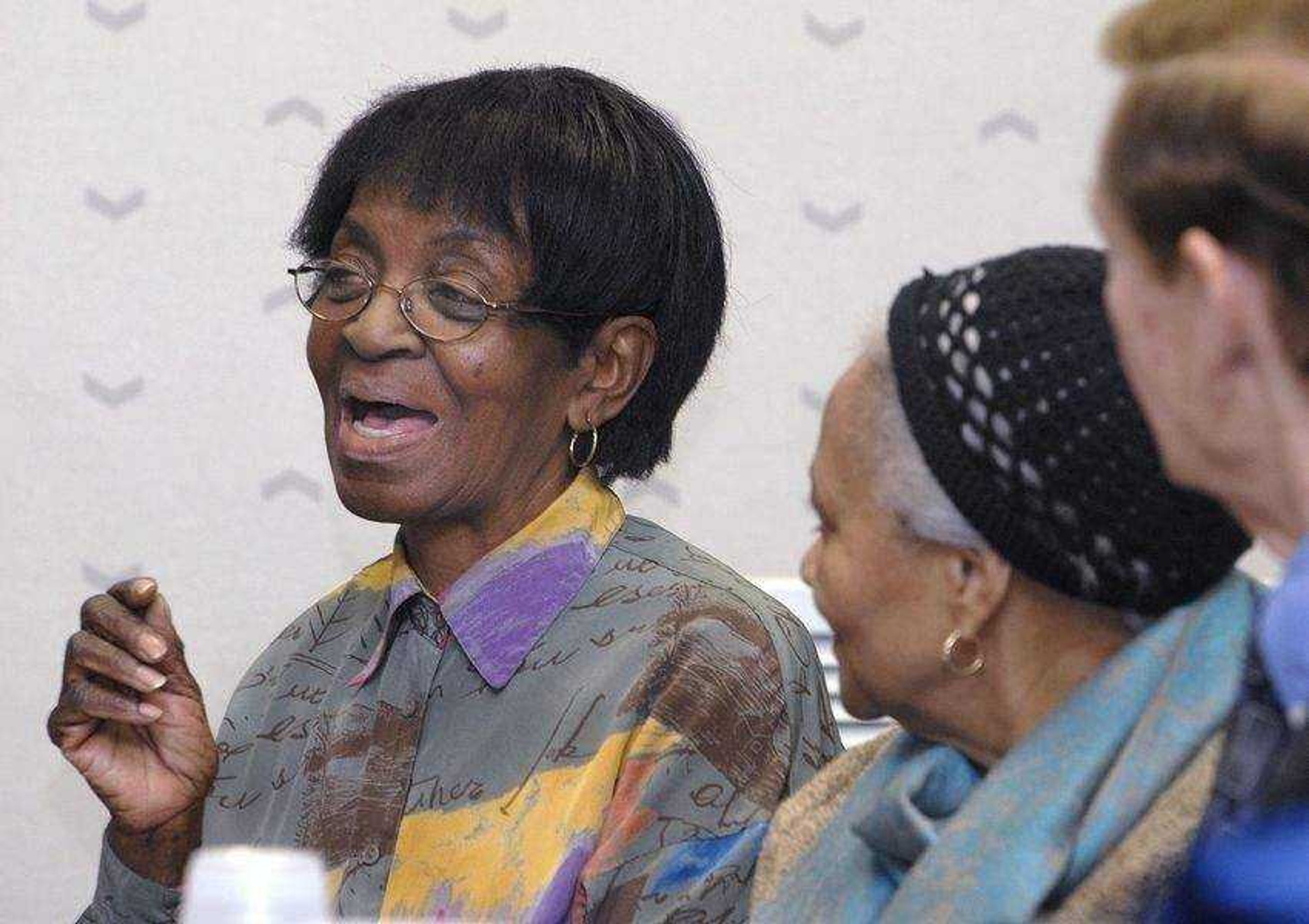Panel discussion looks at black history in Cape Girardeau
Growing up black in Cape Girardeau from the 1930s through the 1970s wasn't easy. "I wouldn't want to have to live through those times again," Louise Cardwell Duncan said. "But I wouldn't trade them." Duncan's words came during a panel discussion, "Remembering Cape Girardeau's African-American Past" hosted by Southeast Missouri State University's Department of History and the Center for Regional History...
Growing up black in Cape Girardeau from the 1930s through the 1970s wasn't easy.
"I wouldn't want to have to live through those times again," Louise Cardwell Duncan said. "But I wouldn't trade them."
Duncan's words came during a panel discussion, "Remembering Cape Girardeau's African-American Past" hosted by Southeast Missouri State University's Department of History and the Center for Regional History.
Duncan, joined by Lloyd Williams, Alberta Spicer, Leola Twiggs and Helen Sterling, spoke bluntly about some of the hardships and joys of being minorities during the Civil Rights movement, about lingering racism and about the need for Southeast Missouri's blacks to reconnect as a community. The stories they told were laced with fondness, humor, hurt and thoughtfulness.
Dr. Frank Nickell, director of Southeast's Center for Regional History, moderated the discussion, telling the audience of about 50 people the panel had close to 400 years of combined memories and experiences to share.
Duncan recalled living with an aunt on weekdays in order to attend the all-black John S. Cobb School in Cape Girardeau. She lived just west of Dutchtown and less than two miles from another school, where students were all white.
Twiggs and others talked about how important Cobb School teachers like Miss Murphy, Mr. Short and Mr. Collins were, both as caring adults and black role models. None would be hired by other schools after Cobb School burned down in the 1950s and the school district decided to integrate the white schools rather than rebuild the black students' school,
At Central High School, Twiggs said, she saw doors marked "Colored" and "White." She sat in a classroom, the lone black student, and watched white students walk up to the teacher's desk to get help with lessons. When Twigs mustered enough courage to do the same, "she told me to go back and sit down and I never asked again," she said. At Cobb, one teacher had called her the "sweetheart of the class" because, despite being kept out of school each fall semester to help her family pick cotton, Twiggs always caught up with and surpassed her classmates.
Sterling told how her father-in-law, Jesse Sterling, helped start the local NAACP chapter and waged a legal battle to open the pool at Capaha Park to blacks.
Williams, who said his best memory was being part of the now-defunct Holy Family church school, pointed out the downside of integration "not just here in Cape but a lot of other large cities. Integration closed a lot of black businesses and restaurants. I don't know why it happened," he said. "Integration seemed like a one-way street."
Cape Girardeau has come a long way, the panelists agreed, but still has a way to go.
Jessica Youngs, a junior from Mount Vernon, Ill., attended the forum in part because it was a chance for her to reconnect to her roots. Born to a white mother and raised in a white family, she said, she only recently met her biological father, who is black.
"It's nice to look around and see people who look like me, and to hear their stories," she said.
Professor Wayne Bowen, chairman of Southeast's history department, said he was struck by the stories of the collapse of Cape Girardeau's black businesses as integration expanded.
"It's always sad to hear those stories, but they're true," he said.
The university videotaped the evening's conversation and will put a copy of the recording in the University Archives. Nickell said afterward that he'd conducted a similar evening in 1993 with different panelists.
"We didn't record it and now those people are gone," he said.
pmcnichol@semissourian.com
388-3646
Were you there?
Does this affect you?
Have a comment?
Log on to semissourian.com
Connect with the Southeast Missourian Newsroom:
For corrections to this story or other insights for the editor, click here. To submit a letter to the editor, click here. To learn about the Southeast Missourian’s AI Policy, click here.










